The term clean beauty is relatively new, but it is tossed around by brands when they want to refer to natural or green beauty practices. If you have been concerned with how toxic most items are, then this is a change that you need to adapt to.
The heavy application of synthetic elements and toxins end up doing more harm than good. Many beauty brands claim that their innovations follow this beauty movement and do not use these harmful toxins.
If you are looking forward to making a change in your beauty regime, you need to learn more about clean beauty and the ingredient options that can help you pick the right items. Often it is clubbed with green beauty and organic beauty; however, they are not entirely the same!
Knowing the difference between the different types of beauty movements will undoubtedly help you make better changes. Please continue reading, and find out everything there is to know about the clean beauty industry and holistic personal care.
Contents
- 1 What defines clean beauty?
- 2 Does clean beauty imply the use of only natural beauty products in skincare?
- 3 What does the Clean Beauty Movement stand for?
- 4 What is meant by greenwashing in clean beauty products?
- 5 What is toxic beauty?
- 6 Why you need to switch to clean beauty
- 7 How to transition to clean beauty
- 8 The importance of clean beauty in today’s world
- 9 Top toxic elements that should be avoided
- 10 Tips for finding the perfect clean cosmetics
- 11 Is clean beauty really better?
- 12 What makes beauty products clean?
- 13 What are the best clean beauty items?
- 14 Clean Beauty-Related Terms Explained
- 15 How to Look Beautiful Naturally Without Makeup
- 16 Is Natural Beauty Better?
- 17 The Beginner’s Guide to Natural And Organic Beauty Brands
- 18 Wrap Up
What defines clean beauty?
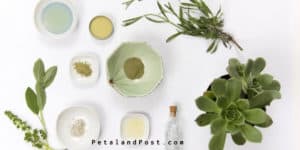
Caring about what you put on your skin should be one of your primary priorities. Skincare is something that you practice each day. So, if you are not careful about the products you use, it could have severe consequences.
This beauty movement is all about making conscious choices when it comes to your skincare. It is all about what you should avoid and which item you should lean towards. You can easily do this by understanding the elements of various skincare regimes.
Once you know what is going in your moisturizer and why it is not suitable for you, making a change will be a cakewalk! When it comes to clean beauty, you need to choose items free of any harmful toxins.
These items are ethical and safe in each way. If you are having a tough time choosing the right article, you might want to learn about the difference between the two types of beauty movements first. Clean beauty’s counterpart, toxic beauty, is the most prevalent in the world currently.
It is not all-natural or all organic, but it is about being conscious of our products and their components. Moreover, since there is no exact way to describe this movement yet, you will need to do a little research of your own. You can receive all the relevant information you need to start right here!
Does clean beauty imply the use of only natural beauty products in skincare?
You probably think that clean beauty has a rigorous list of rules that need to be followed. However, this is far from the truth. It is a very flexible concept with necessary and minute details that we as consumers need to be mindful of.
When you think of clean beauty, you do not need to think about all-natural, plant-based, or organic products. Organic elements are a completely separate domain of things that are not entirely part of the clean beauty industry.
With natural and organic products, lab-made toxins are forbidden, and only a few natural ingredients can be used to create them. On the contrary, clean beauty brands utilize human-made components along-side natural elements.
It was recently found that there is a drastic difference between the two, and so they cannot be clubbed as the same thing. While there can be natural ingredients in your items, there cannot be any synthetic ingredients in organic or natural ones.
So, the clean beauty movement is not synonymous with natural beauty or organic beauty movements!
What does the Clean Beauty Movement stand for?
The Clean Beauty Movement is relatively simple to understand if you do not confuse it with other beauty movements. There are a few things that set it apart, and once you know them, it will be elementary for you to hop on board with this movement!
Here is what this movement is all about!
1. No toxins in the products
When it comes to this beauty movement, the ultimate rule is to consume safe products on your skin. The most convenient way to know if your product is clean or not is to stay informed about the list of approved ingredients.
You can read the ingredients label on the product to know whether everything used in this product is non-toxic or not. Most products come with grades that tell you about the degree of their safety. You can refer to these grades if you are not well-acquainted with the names of toxic ingredients!
The bottom line is that the composition of the products you have must not contain harmful substances and be toxin-free. This is the only method in which they can be constituted as clean products!
2. Transparency with ingredient labels
Another core idea of clean beauty is transparency with its customers. No matter how clean their product’s composition is, if they fail to reveal their ingredient list, they are in the wrong.
All customers deserve to know what is going into their products. This transparency helps brands build a sense of trust with their customers too. A considerable problem with most items in the market is misleading ingredient names for their cosmetics.
For instance, the fragrance is a relatively broad term. It was found that it could consist of anything. Listing it down as one of the ingredients in nail polish, moisturizers, body oil, etc., is misleading and vague. Additionally, greenwashing of products is also an unethical practice that goes against clean beauty entirely!
What is meant by greenwashing in clean beauty products?
Having transparent labels is one of the essential criteria for clean beauty and personal care brands. However, most brands start greenwashing their titles, which hampers this transparency. So, what exactly is greenwashing in clean beauty?
Greenwashing is falsely advertising your cosmetics as green or organic. When you see a lotion bottle with the words natural on it, you will instantly be drawn to it. This is because, for years, natural items have been deemed safe for use.
However, it was found that not every natural beauty product is free of toxins and synthetic items. They might be labeled as plant-based, but the composition could have nasty ingredients unsafe for application. Usually, green items have a ton of allergens and toxins.
It is advised that you do not bee-line to all “organic” items you see in a store. Instead, you must read the label carefully and see what the ingredients are. Greenwashing is misleading to the customers and can be very harmful in the long run.
Companies try to plant the idea of a prudent image for their cosmetics by calling them organic through greenwashing. This captures your attention, and you are drawn to their products all because of false advertising.
You are more susceptible to fall prey to greenwashing if you are a conscious customer who cares about the planet. These companies make their items seem sustainable and eco-friendly and trick you into buying them.
Things on the label to watch out for
If you have just been made aware of safe beauty and greenwashing, you might need a little help getting started. Here are a few things that you need to watch out for on labels to avoid being a greenwashing victim.
- Hypoallergenic
- All-natural ingredients used
- 100% Organic
- Suitable for all skin types
- No harmful toxins
- Animal friendly
- Plant-based
What is toxic beauty?
Toxic beauty is the complete opposite of clean beauty. As the name suggests, it is unsafe and full of harmful toxins that cannot be good for your body. However, it is also the most prevalent in the personal care industry. Toxic goods are full of allergens and toxins that are very harmful to our bodies.
These items are mass-produced and advertised to seem healthy for people to try. However, sneaking in toxins in the ingredient lists is not our only concern. Almost all the items you see in the market come with safety labels and third-party tested assurances.
The tests conducted are far from adequate. All beauty and skincare products, including shampoos, conditioners, moisturizers, lip balms, etc., go through short-term tests. A Harvard study says that all these tests are conducted to see if the products have an immediate side-effect on people’s health.
This could include a skin rash, eye redness, etc. All these outcomes are immediate, while more severe consequences of using toxic products are entirely ignored. The study also suggests a powerful link between hair dye and breast cancer development in women.
It says that women who used permanent hair dye were at a 9% higher risk of developing breast cancer. The study also notes that breast cancer was 45% more severe in women of African-American descent.
Why you need to switch to clean beauty
As mentioned earlier, plant-based and organic beauty is more susceptible to greenwashing. So, there is no way that natural beauty is always going to be superior. For instance, most “natural” objects have some essential oil instead of synthetic fragrances.
This essential oil is very harmful to your skin if its composition is not right. Additionally, they are used along with completely unnecessary fillers. This ingredient is generally synthetic and ends up making your supposedly green product unsafe.
Over 40% of all-natural items contain a certain amount of synthetic ingredients that are not safe for you. In some cases, synthetic ingredients are much more effective and better for your body.
While most ingredients like talc, formaldehyde, etc., are very harmful and need to be avoided, many natural ingredients can be dangerous for you too. Clay is one such element that you must steer clear of. Clay could contain toxic heavy metals, which can send you right to the emergency room!
How to transition to clean beauty
Here is how you can make a swift transition from your current favorites to clean ones hassle-free!
1. Dip your toes in first
Drastically switching from your beauty items to clean ones can be a rough transition. It Is advised that you dip your toes first and get a few good articles that you know are true to the clean beauty movement. Secure yourself a moisturizer for starters, and see how that works for you!
2. Discover a clean beauty brand
Once you get the hang of clean beauty regimes, your safest bet is to find a brand that suits you. This will require quite a lot of research. However, once you find a good brand, switching to clean beauty will be a breeze. A great clean beauty brand with all rights reserved is Goop!
3. Figure out where to shop
When you switch to this type of beauty, you need to find an excellent store to source all your cosmetics from. The Detox Market, Follain, Credo Beauty, etc., are great options you can consider! You can explore your beauty options once you discover a great store online or at your nearby mall!
The importance of clean beauty in today’s world
The evolution of clean beauty has never been as crucial as it is right now. With spreading awareness that the FDA has minimal regulation over this industry, questions are arising everywhere.
Think about it. You apply cosmetic articles to some of the most sensitive areas of your skin, including your face, eyelids, and lips. So the articles being safe is pretty much non-negotiable.
The reality, though, is that these items could have several unsafe and synthetic components. Also, the FDA’s limited intervention means that it becomes difficult to determine every company’s claims’ validity.
US Laws regarding the manufacturing and distribution in the beauty industry have not seen much change since 1938. That brings three reasons for the necessity of clean beauty units for people to use.
Disclosure Of composition
The FDA’s bare involvement gives cosmetic establishments, particularly fragrance ones, a huge loophole. Brand labels do not have to disclose ingredients considered trade secrets. So beauty articles can get away with several poisonous elements as long as they are ingredients of the product-based formula.
Presence Of Endocrine Disruptors
As the name suggests, these chemicals mess with the endocrine system. They can affect your mood, metabolism, and even your reproductive system. Not to mention, research also links them with long-term health issues like congenital disorders and cancer.
Carcinogenic elements
Some beauty and skincare elements are carcinogen-based, which means they can cause cancer. Although hard to believe, they are within the law to use such chemicals! The need for pure formulas with informative labels is now at an all-time high.
Top toxic elements that should be avoided
With so many brands that may or may not have a questionable composition, finding safe ones can be challenging. Before picking up items for your skin and hair care routine, it is suggested that you do a bit of research.
However, if you don’t know where to start, here is a list of ingredients you should avoid at all costs! Also mentioned are the reasons why.
Parabens: Parabens fall into the category of endocrine disruptors. They are agents of health issues like obesity, hormone-related cancer, and reproductive organ harm.
Fragrances: These might be triggers for allergies and asthma attacks. That said, fragrances can also contain phthalates. These cause severe issues like breast cancer, infertility, type 2 diabetes, and more.
Formaldehyde: Formaldehyde is a known carcinogen, which means it can cause cancer. Exposure to this chemical often causes sore throat, itchy eyes, and nosebleeds.
Mineral Oil: Petroleum is one of the largest contaminants in the human body because you ingest it from objects like lip balms. Untreated or minimally treated versions of this mineral oil can be carcinogenic.
Hydroquinone: Hydroquinone is a topical bleaching cream that can cause some cancers. It might also affect the immune response, adrenal gland function, and ochronosis.
Tips for finding the perfect clean cosmetics
If you believe in hair and skin care, make it your priority to find and use the perfect cosmetic items. Here are a few tips for doing just that.
Read Those Labels
Yes, it isn’t enough to settle for a product that claims to be organic. You want to check the label for the exact chemical breakdown for the items you use on your body.
For instance, consider your shampoo and conditioner. Such items can list chemicals like methanol or formalin on their label. However, what they do is release formaldehyde when mixed with water.
Use Websites And Apps As Determiners
It can be hard to keep track of all the beauty industry’s jargon. So to take the guesswork out of shopping, try ingredient checker websites or apps. A quick search will tell you how a product is made and how unsafe it is.
Find Trusted Brands
Always perform a bit of research to find trustworthy sites from where you can buy them. You should see that the company’s regulations are in line with what you want. Also, ensure they are transparent about the ingredients they utilize in manufacturing and packaging.
Is clean beauty really better?
Clean beauty items are a big step in the direction of pure and safe products. That said, a stage where it is sure that these items are better is still a-ways off.
The makeup of such products does forego certain toxic chemicals. However, even high concentrations of innate ingredients can lead to irritations or allergic reactions. A few common issues caused are rashes and dermatitis on the face and hands.
For this reason, it is crucial to keep in mind that clean and green beauty is not synonymous words. Instead, the key to getting the most out of every clean product is finding the right balance.
A Reuters Health interview says that dermatologists think some lab-made ingredients receive a bad rep without proof of their harmful nature. Moreover, to please the public demand for natural, non-harmful articles, companies are now packaging the wrong green ingredients.
With all the hype surrounding green beauty, it can be hard to believe that they are less effective. However, this can be true.
Since truly natural beauty formulas do not use lab-made ingredients, it limits their formula. So their texture and fragrance might not be on par with traditional standards.
Your clean beauty item might also be free from preservatives. If so, they may even have a shorter life span than conventional formulas.
What makes beauty products clean?
We understand that clean is a relative term. With no regulations, there are no set ingredients that can make an item safe. So the most effective method to describe such a product would be to say it is safe for humans to try.
Items by any brand that have no poisonous components in their makeup can declare themselves clean. No one list of natural ingredients makes a cosmetic clean, nor do specific artificial components make it toxic. Instead, a clean cosmetic is one that is transparent about its makeup.
Often people confuse the clean with being natural, sustainable, vegan, or something else along these lines. However, these are misconceptions. In short, natural is always clean, but clean is not always natural.
Similarly, clean is not similar to chemical-free. Instead, a beauty item that foregoes toxic human-made ingredients like parabens and silica is clean.
Since the FDA does not regulate the cosmetics industry, there is no test to determine its quality. The label instead comes from brands’ advertisements and every customers’ reception of the products.
If you wonder how an artificial product can be clean, it is that they can be harmless at times. The formula for these products can help prevent skin reactions making them non-toxic and therefore clean.
What are the best clean beauty items?
As the Clean Beauty Movement continues to get attention, we continually see improvement in brands. After all, no one wants to miss out on the chance to add clean body care to their routine!
With the right items, you could see a significant improvement in how your skin and hair look. So here’s a little cheat sheet of some of the best clean beauty objects to help you do just that!
Skincare Products
When you feel your face or body lacks that bit of glow, these are a few products you will love.
● Boscia Clear Complexion Cleanser: The brand has great clean skincare items. This cleanser shows signs of reducing wrinkles and dark spots. The cream-based formula also helps maintain moisture and collagen while also soothing sensitive skin without producing too much oil.
● Juice Beauty SPF 30 Tinted Mineral Moisturizer: This moisturizer can help shrink pores for a younger look and promote skin repair. It also works in brightening and toning the skin while moisture and pH balance.
Makeup Products
Now, coming to a girl’s best friend: makeup! Here are a few great products you can try that are great for your face.
● Naked Poppy Eyeliner: This eyeliner is from a new beauty brand called New Poppy. It glides onto the eye smoothly and has a water-proof look.
● Beautycounter Tint Skin Hydrating Foundation: This foundation has the perfect cream-formulation for covering imperfections. It will blend your skin out for an effortless, bright, and even look.
Hair Care Products
Give your hair the best care with these clean beauty products!
● Herbal Essences Bio Renew Shampoo and Conditioner: This was the first brand to work towards meeting the Environmental Working Group’s clean beauty standards. Both products are full of moisture, sulfate-free, and inexpensive.
● Avalon Organics Tea Tree Shampoo: The perfect shampoo for cleansing hair while calming an irritated scalp. The brand is organic with products that are soothing and come with botanical fragrance.
There are a few phrases that might come up in connection with clean beauty products. To truly understand what this trend is about, you must know the difference between these terms. Here are some of them.
Vegan Beauty
For those who love animals, vegan articles are free of animal by-products or other animal ingredients. It is important not to confuse clean with vegan. Clean beauty may use non-vegan components like beeswax, honey, lanolin, and tallow.
Cruelty-Free Beauty
A beauty product that does not undergo testing on animals is cruelty-free. Also, any animal ingredients present in these formulas did not come at the cost of the animal. So cosmetic items in the industry can be cruelty-free without being vegan, and vice versa.
Sustainable items
Sustainable means that the ingredients, the product, and the packaging should not harm the environment. Brands obtain sustainable articles, ethically, for the sake of planet safety.
Such cosmetics often use no-waste packaging so that it is easy to recycle them. Some companies make such moves keeping the environmental health crisis in mind.
Non-toxic articles
The formula of a non-toxic beauty product has no harmful side effects. Even water in the wrong dosage can be toxic. So companies must do what they can to manufacture articles without such elements.
Toxic items can cause serious health issues, from allergies to rashes, cancer, and more. So clean beauty products actively avoid ingredients that are toxic according to third-party resources like the EWG.
Read More
Wrap Up
If you choose a clean beauty product with care and consideration, it will do wonders for your skin and body care routine. Keep in mind, though, that this is a tentative label. Do not blindly trust products that proclaim themselves as organic or all-natural.
Instead, do proper research on products you have an interest in before making any purchase. When opting for green products, do try them out to check for allergic reactions if possible.
You need to keep a balanced view of natural and artificial products. Only then will you be able to formulate the perfect self-care routine for yourself with the best clean beauty products!

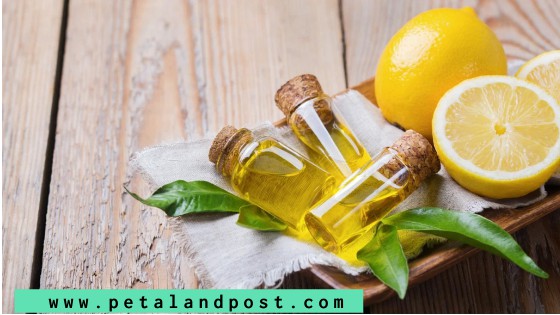
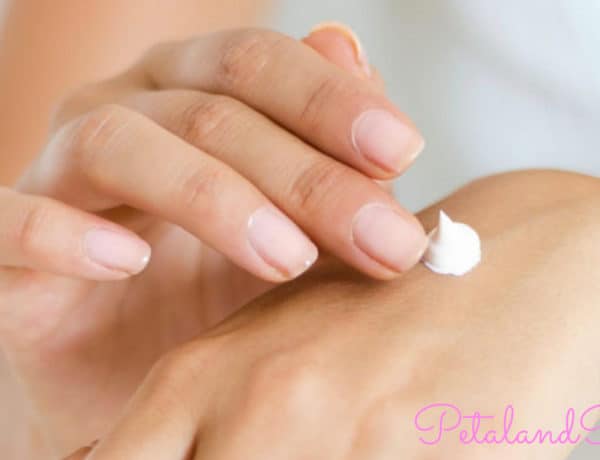
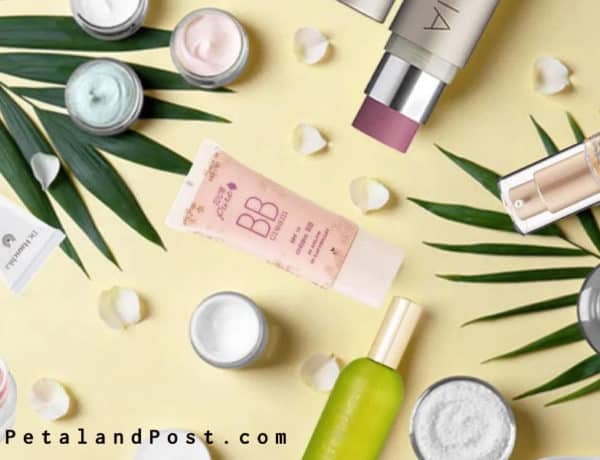
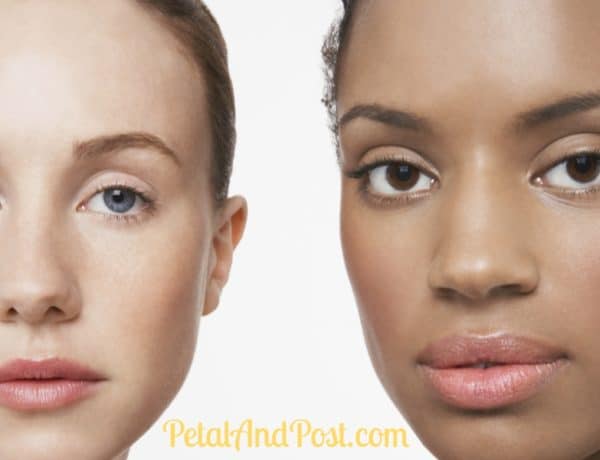
No Comments